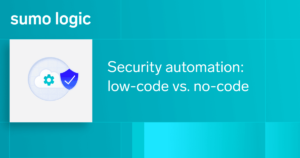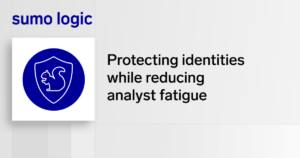
Many organizations have learned firsthand how severe cyber threats can be. Cyberattacks are growing in complexity, and their unpredictable nature has prompted businesses to take cybersecurity seriously.
Nonetheless, amid economic disruption and instability, many organizations have been forced to cut back on security spending. Consequently, in this “corrective period,” as Forrester calls it, CISOs must put forward exceptionally compelling arguments to justify their cybersecurity budgets and investments, especially large ones.
Here are a few suggestions for building a viable cybersecurity budget strategy revolving around measures such as return on investment (ROI).
Drawing up a viable cybersecurity budget
Dispose of non-essentials (reduce), make the most of what is left (optimize), and demonstrate the benefits vs. costs (evaluate) — these should be the primary rules of drawing up a cybersecurity budget.
Tool consolidation
A good security budget plan rarely includes a vast tool stack because, as a rule, more tools incur higher costs.
In addition, an extensive security stack requires a large team of cybersecurity professionals with expertise in a heap of different, predominantly point solutions, which can be a sizable investment.
Finally, a vast security stack means high complexity and redundancy (overlapping functionalities) — typically major impediments to effective and efficient work — which are hardly appealing to the decision-makers in any organization.
For these reasons, tool consolidation is among the best routes to take in times of conservative spending.
Security integration and automation in incident response
Security integration and automation enable prompt response to any cyber risk and is highly conducive to optimizing tool stacks and boosting your security team’s efficiency.
Integration and automation capabilities convert the work of your various tools into coordinated, streamlined processes and eliminate repetitive manual tasks, reducing analyst fatigue and saving precious time and resources. By relying on them, your SOC gains a series of benefits, such as:
-
Improved SOPs (Standard Operating Procedures)
-
Enhanced and proactive threat investigation
-
Reliable detection of false positives
-
Higher employee retention rate due to the automation of the monotonous and mundane side of their day-to-day work
-
Minimized response time and impact of cyberattacks
Solutions that make highly integrated tool stacks and automated workflows possible have become critical in security operations today. Gartner and Forrester even see automation as one of organization’s future-proof cybersecurity elements.
In incident response, automation usually takes the form of:
-
SOAR-like capability added to a modern SIEM (Security Information and Event Management) or bundled with a few other security products.
A full-fledged SOAR or a modern SIEM with incorporated SOAR-like functionality enables a fully integrated environment allowing you to leverage automated structured incident response processes. An example is an automated enrichment and notification workflow taking the form of a playbook. A playbook like this allows you to enrich security alerts and create structured notification processes, beneficially affecting KPIs such as MTTD and MTTR.
Return on investment
Hypothetical positive outcomes rarely sound convincing to stakeholders. Instead of telling them how the investment pans out theoretically, you should take a practical approach and demonstrate its benefits.
Suppose your security team receives thousands of alerts per month. In that case, investing in a dependable security solution that boosts alert triage, reduces false positives, and helps you contextualize and prioritize alerts would directly affect your security posture. It can produce a noticeable ROI regardless of your current investment cost.
For example, SOAR typically has a great ROI potential. Even though it may look like a significant security investment at first glance, it can bring substantial long-term benefits that outweigh the costs. Moreover, not investing can be far more costly than investing in a technology that enables you to build a robust cybersecurity environment.
In the above scenario, SOAR or SIEM with included SOAR-like capabilities can lead to the following advantages:
-
Analysts will have more time to focus on challenging initiatives as they can analyze copious amounts of alerts autonomously.
-
Security teams will be able to address alerts much faster; instead of days and weeks, it can help you get through every alert in minutes.
These are all tangible upsides that any organization’s leaders can appreciate. An investment in security integration and automation can be a way to make vital savings while, at the same time, increasing the budget.
While investing in state-of-the-art security technologies may seem risky during stagflation and economic slowdown, the return on investment can be a sufficient reason to opt for it. Its benefits may not be visible overnight, but investing by focusing on ROI is a viable long-term strategy.
How to get your cybersecurity budget proposal approved
To get your organization leaders on board with your strategy, consider the following nine tips:
-
Long before the proposal, work on raising general cybersecurity awareness in your company, highlighting that security is everyone’s responsibility.
-
Establish close relationships and build alliances inside your organization so that other departments support your cybersecurity efforts.
-
Convince other departments that developing projects without considering cybersecurity could endanger your organization; everything from building a new app to adding new IoT devices can affect your security posture, meaning their budget strategies should all leave room for cybersecurity.
-
Prove to stakeholders that cybersecurity is not just one of many things an organization needs to address — it is the utmost priority.
-
Highlight the previous year’s security spending, policies, processes and trends in your organization.
-
Demonstrate the risk of not investing, i.e., explain that the lack of adequate investment exposes your organization to much higher risk and, thus, hidden and unexpected costs that can massively add up over time.
-
Show the ROI of your security budget and investments.
-
Stick to your strategy’s essential and most impactful business benefits.
-
Be clear and concise when presenting your proposal, and rely on measurable values.
Final thoughts
Organizations constantly try to reduce as many unnecessary costs as possible, especially in uncertain times like these. Craft a cybersecurity budget proposal with these suggestions in mind to increase the probability that your organization leaders approve your request.
Learn more about how Sumo Logic Cloud SOAR can help integrate your security stack and automate response. Get an in-depth breakdown of the benefits of tool consolidation and the downsides of tool sprawl.



